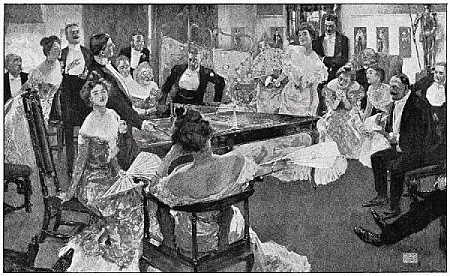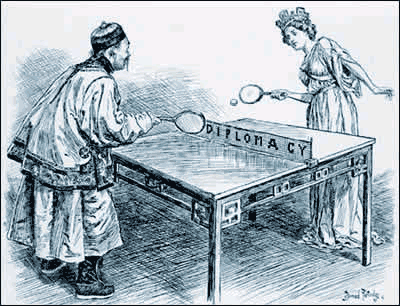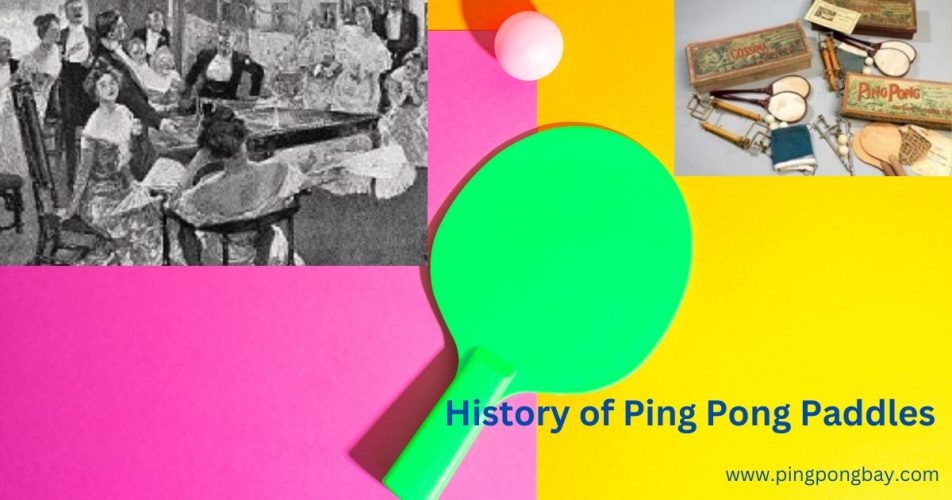Pingpong (also known as table tennis) is one of the most widely played sports in the world. The game has as rich a history as any other sport or game – which also applies to ping pong paddles, which are an important component of the game. In fact, its beginnings and development can be traced back more than 100 years ago. Below, we will discuss the history of Ping Pong paddles.
During the past century, the table tennis racket has undergone numerous changes and significant improvements. It was originally a hollow drum racket – the earliest form of the paddle. Nowadays, sponge rackets are said to be sophisticated and are widely known throughout the world.
In this post, we will look at how table tennis paddles got their beginnings and how they transformed into what we know and love today: the equipment we normally use for table tennis.
How ping pong was Invented
This popular sport was first invented in Victorian England in the 1880s. It is commonly known as ping pong in the US. During the winter, when it’s too cold to play outside, it became an indoor adaptation of the popular game lawn tennis.
Due to its ease of playing at home where there was no need for a big outdoor space, it becomes popular very quickly.

There are a lot of companies that market game sets that contain nets, bats, and balls. There were many different names for the game back then, depending on the equipment company. Examples include:
- Ping-Pong or Gossima
- Table Tennis
- Whiff Waff
- Pom-Pom
- Pim-Pam
In 1901, the Ping Pong Association and The Table Tennis Association were formed after Ping Pong and Table Tennis stuck.
Ping Pong – where does the name come from?
Due to its popularity, Jaques & Son Ltd, a British manufacturer, trademarked the name Ping-Pong globally. The game ended up with the name Table Tennis (or a similar name) on all products made by other manufacturers to avoid trademark infringement.
In the US, Parker Brothers purchased the trademark rights from Jaques so that other companies and organizations would not refer to it as Ping-Pong.
Between the 1880s and the early 1900s

Table tennis racquets have undergone the following developments in roughly the same order.
- Originally, there was a long-handled vellum battledore, also called the banjo racket, that could reach up to 48 cm in length.
- The long-handled racket was replaced by a hollow vellum battledore.
- There was an improvement in in-game performance among players who used a cork-faced racket instead of one with sandpaper.
- In response, a plain wooden paddle was introduced, primarily made from wood of many kinds, and of various sizes and thicknesses.
- Sandpaper-covered rackets were invented in order to help players spin the ball.
Between the 1920s and 1950s
A great deal of attention was paid to the technical specifications of the paddle during these decades. For the very first time in history, European players became aware of Japanese technology.
In the 1920s, table tennis experienced a revival after it fell out of fashion around 1903. As it grew in popularity, more and more standardized rules were introduced and adopted. In 1926, the first world championships were held in England, and the ITTF (International Federation of Table Tennis)https://www.ittf.com/ was formed in Berlin.
There was no sponge on rackets during the Classic Hard Bat era, from 1920 to 1950. European players were generally dominant during this period.
- It started with the creation of a pimpled rubber racket. Canvas was also backed by rubber, and the surface was studded.
- Next, extra-wide paddles were developed, which had a pimpled surface, and were primarily used by defensive players.
- In the 1950s, a waffle sponge racket was manufactured.
- It was during the same decade that the first Japanese ping pong rackets made their way to the European sports scene. Each racket measured 10 millimeters in diameter.
- In the market, there was a crepe rubber racket, but as ping pong players found it difficult to control the ball, it failed to capture their hearts.
Between the 1950s and the 1970s
Bats used in table tennis changed dramatically in the 1950s. With a racket made out of foam sponge rubber, Japanese player Hiroji Satoh was able to develop much more speed and spin and he won the 1952 world championship.
In these decades, paddles were primarily focused on technical specifications. First time in history, European players became aware of Japanese technology.
During world championships, countries such as China, Japan, and Korea began to dominate the podiums due to the sport’s popularity in Asia.
Between the 1970s and 2000s
Ping pong rackets developed during this period have led to the cutting-edge rackets we have today.
- The first phase consisted of a racket covered with a pimpled rubber sponge, measuring 1mm. However, this was unsatisfactory since it limited how spins could be performed.
- In later years, a 2 mm pimpled rubber racket was developed for offensive play, but again with limited spins.
- Next, we moved on to a more innovative phase. A heavy topspin was designed to be countered by a surface that effectively absorbed it.
- Players can produce the greatest degree of speed and spin with paddles incorporating a 1 mm reverse rubber sponge surface.
- Furthermore, the same 1 mm reverse rubber sponge paddle was developed for better racket control.
Ping Pong Diplomacy
Ping Pong Diplomacy came into being in the 1970s when a friendly game of table tennis between Chinese and American players led to a player exchange and even a visit to China by President Nixon. During the cold war, this helped open the door between the two nations and lifted the embargo on China.https://www.history.com/news/ping-pong-diplomacy

Table tennis becomes an Olympic sport
Throughout the 20th century, table tennis had been growing in popularity, and it finally became an Olympic sport at the Seoul-South Korea Olympics in 1988 and International Table Tennis Federation represents it. Approximately 300 million players worldwide play ping pong, and there are 900 million fans of the sport. This makes it only natural that the event will be part of the Olympic Games.
Let’s dive deeper into it.
There was a proposal to include table tennis in the 1936 Berlin Olympics, but it was not approved.
Many countries, including Japan, Yugoslavia, Germany, and others, wished to see table tennis included in the 1940 Olympics. However, the necessary steps weren’t taken, and the Second World War started in 1939.
Four years later, in 1948, the London Olympics were held. Many countries debated whether table tennis should join the Olympics because already there were so many sports there. The London Olympics, therefore, did not include table tennis.
After all, that happened and the long discussions, International Table Tennis Federation decided that table tennis would have an amateur and professional status, which led to table tennis being a part of the Seoul Olympics in 1988. During each Summer Olympics since then, table tennis has been a big part of the games
Final Words
We hope you found the explanation of the origins of table tennis helpful. To see all the important dates in the sport’s history check out this very handy table tennis timeline of events.

